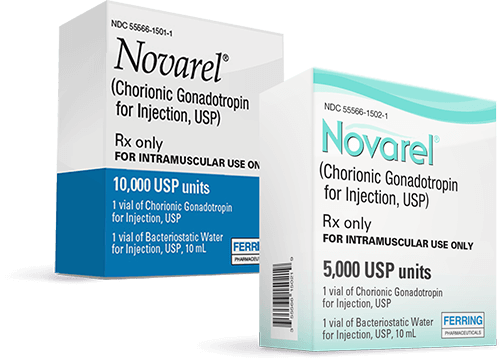
Is Blood Common After IVF 10 Days Post-Transfer?
April 21, 2025
What Is Reciprocal IVF? Your Guide to a Unique Path to Parenthood
April 22, 2025What Is the IVF Bill? Your Guide to Understanding This Game-Changing Legislation
In vitro fertilization (IVF) has been a lifeline for millions of families dreaming of having a child. But lately, it’s been making headlines not just for its miracles but for something else: the IVF bill. If you’ve stumbled across this term online or heard it buzzing around in conversations, you’re probably wondering what it’s all about. Is it a law? A proposal? Something that could change how IVF works in the U.S.? You’re in the right place. This article is your one-stop guide to understanding the IVF bill—what it is, why it matters, and how it could affect you or someone you know.
IVF isn’t cheap, and it’s not always easy to access. For years, people have been pushing for ways to make it more affordable and available. That’s where the IVF bill comes in. It’s not just one single law but a collection of efforts—some already passed, some still in the works—to protect and expand access to this fertility treatment. Whether you’re thinking about IVF yourself, supporting a loved one, or just curious about what’s happening in the world of reproductive rights, stick with me. We’re diving deep into the details, breaking it down step by step, and uncovering some angles you won’t find everywhere else.
The Basics: What Does “IVF Bill” Even Mean?
At its core, the IVF bill isn’t one specific piece of paper sitting on a politician’s desk. It’s a catch-all term for legislation aimed at supporting in vitro fertilization. IVF is a medical process where an egg is fertilized by sperm outside the body, then placed into the uterus to grow into a baby. It’s been around since the late 1970s, but it’s still a hot topic because of its cost, its ethics, and who gets to use it.
In the U.S., lawmakers have been tossing around ideas to make IVF more accessible. Some of these ideas have turned into real laws, while others are still being debated. For example, in 2022, after the Supreme Court overturned Roe v. Wade, people started worrying about whether fertility treatments like IVF could be at risk. That sparked a wave of bills to protect it. Then there’s the push to cover IVF costs through insurance—something only a handful of states do right now. So when someone says “the IVF bill,” they might mean a federal proposal, a state law, or even a future plan to fund or safeguard IVF.
Why does this matter? Because IVF can cost $12,000 to $20,000 per cycle, and most people need more than one try. Without help, it’s out of reach for a lot of families. These bills could change that, but they also stir up big questions about money, rights, and even science.
Why the IVF Bill Is a Big Deal Right Now
IVF has always been a bit of a lightning rod, but it’s especially in the spotlight today. Social media platforms like X are buzzing with chatter about it, and Google searches for “IVF bill” have spiked in 2025. Why the sudden interest? A few things are driving it.
First, there’s the political climate. After Roe v. Wade was overturned, some states started eyeing laws that could affect reproductive technologies. In Alabama, for instance, a 2024 court ruling called frozen embryos “children,” throwing IVF clinics into chaos until lawmakers stepped in with a quick fix to protect the process. That got people talking about whether IVF needs stronger legal backing nationwide.
Second, more people than ever are using IVF. According to the CDC, over 91,000 babies were born through IVF in the U.S. in 2021, and that number’s only growing. As demand goes up, so does the push for policies to make it easier to get. Couples are sharing their stories online—heartbreaking struggles with infertility, sky-high bills, and the joy of finally holding a baby. It’s putting pressure on lawmakers to act.
Finally, there’s a cultural shift. People are waiting longer to have kids, and fertility challenges are becoming more common. IVF isn’t just for rare cases anymore—it’s a mainstream option. But with costs so high and insurance coverage spotty, families are looking to the government for help. That’s where these bills come in, promising to shake things up.
Breaking Down the Types of IVF Bills
Not all IVF bills are the same. They tackle different problems, from funding to legal protection. Here’s a rundown of the main types floating around in 2025.
Funding and Insurance Coverage
One of the biggest hurdles with IVF is the price tag. A single cycle can drain your savings, and if it doesn’t work, you’re back to square one. Some states—like New York and Illinois—already require insurance companies to cover IVF, but most don’t. At the federal level, there’s been talk of a bill to make IVF part of standard health plans, kind of like how maternity care is covered.
Take the Access to Family Building Act, introduced in 2024 by Senator Tammy Duckworth. It’s not law yet, but it aims to guarantee IVF coverage under private insurance and programs like Medicaid. If it passes, it could save families thousands. Imagine a couple in Ohio, where insurance rarely covers IVF, suddenly able to try without selling their car. That’s the kind of change people are hoping for.
Legal Protections for IVF
Then there’s the legal side. After that Alabama ruling, some lawmakers want to make sure IVF stays safe from court decisions or state bans. In 2024, Congress saw bills like the Right to Build Families Act, which would stop states from restricting fertility treatments. It’s a response to fears that defining embryos as “persons” could outlaw IVF altogether.
Think about it: if embryos are legally “people,” what happens to the extras that don’t get used? Clinics might shut down rather than risk lawsuits. These bills aim to keep IVF clinics open and doctors out of legal hot water.
Tax Credits and Financial Help
Another idea is giving families a tax break for IVF costs. In 2023, a proposal floated around to let people deduct up to $30,000 in fertility expenses. It didn’t pass, but it’s still on the table in 2025. This wouldn’t make IVF free, but it could ease the sting for middle-class families who don’t qualify for other aid.
State vs. Federal Efforts
Here’s where it gets tricky: some IVF bills are state-level, others are federal. States like California and Colorado are pushing their own plans, while Congress debates nationwide rules. The patchwork approach means your access to IVF might depend on your zip code. A federal bill could level the playing field, but it’s a tougher fight with so many opinions in the mix.
How Could the IVF Bill Affect You?
So, what does all this mean for regular people? Let’s break it down with some real-world scenarios.
If You’re Planning IVF
Say you’re a 32-year-old teacher in Texas, where IVF isn’t covered by most insurance. Right now, you’re saving up $15,000 for one shot. If a federal IVF bill passes with insurance mandates, your plan might cover it, dropping your out-of-pocket cost to a few hundred bucks. Suddenly, you can try again if the first round fails—without going broke.
If You’re a Taxpayer
Even if you’re not using IVF, these bills could hit your wallet. Funding them might mean higher taxes or cuts elsewhere, like road repairs or schools. On the flip side, supporters argue it’s an investment—more kids mean more future workers and taxpayers. It’s a trade-off worth thinking about.
If You’re Worried About Ethics
Maybe you’re on the fence about IVF itself. Some bills address ethical concerns, like what happens to unused embryos. They might set rules for donation or research, which could ease your mind—or spark new debates. It’s a personal call, and these laws could shape how you feel about the whole process.
Quick Poll: What Matters Most to You?
- A) Lower IVF costs
- B) Legal protection for clinics
- C) Ethical guidelines for embryos
Drop your vote in the comments and see what others think!
The Science Behind IVF: Why It Needs Support
To get why these bills are popping up, it helps to know how IVF works—and why it’s so expensive. Here’s the scoop, minus the jargon.
IVF starts with hormones to make a woman’s ovaries produce extra eggs. Those eggs get collected, mixed with sperm in a lab, and turned into embryos. After a few days, one or two are placed in the uterus. The rest? They’re frozen for later or donated. It’s a high-tech dance of biology and timing.
But it’s not foolproof. The CDC says about 1 in 3 IVF cycles leads to a live birth for women under 35—and that drops with age. Each step—meds, lab work, doctor visits—adds up. A 2023 study from the American Society for Reproductive Medicine found the average cost per successful birth (not just a cycle) is closer to $50,000. No wonder people want help.
New tech could change that. Researchers are testing “mini-IVF” with fewer drugs and lower costs, or even growing eggs from stem cells. A 2022 paper in Nature hinted at breakthroughs that might cut expenses by 20% in the next decade. If bills fund this research, IVF could get cheaper and better—fast.
What’s Missing From the Conversation?
Most articles about the IVF bill stick to the basics: cost, access, legality. But there’s more to explore. Here are three angles you won’t find everywhere else.
The Mental Health Toll
IVF isn’t just a financial strain—it’s an emotional rollercoaster. A 2024 study from the Journal of Fertility and Sterility found 40% of IVF patients report anxiety or depression during treatment. Yet none of the bills I’ve seen mention mental health support. What if insurance covered therapy alongside IVF? It could make the journey less lonely—and boost success rates, since stress can mess with fertility.
The Workplace Gap
Ever tried juggling IVF appointments with a 9-to-5 job? It’s brutal. Shots, scans, and transfers mean time off, and not every boss gets it. In the UK, some companies offer “fertility leave,” but it’s rare here. A bill tying IVF support to workplace flexibility—like paid leave for treatments—could be a game-changer. Imagine not choosing between your job and your family.
The Ripple Effect on Adoption
Here’s a twist: if IVF gets cheaper, will fewer people adopt? The U.S. has about 100,000 kids waiting for homes each year, per the Adoption Network. Some worry easier IVF access might shrink that number. But it could go the other way—more embryo donations from IVF could boost adoption rates. No one’s crunching those numbers yet, but they matter.
Real Stories: Who’s Affected by the IVF Bill?
Numbers are great, but stories hit home. Meet a few people whose lives could shift with these laws.
- Jenna, 29, Florida: “We’ve done two rounds of IVF—$30,000 total. No baby yet. If insurance covered it, we’d keep trying. Right now, we’re tapped out.”
- Mark, 41, Oregon: “My sister used IVF after cancer killed her fertility. It worked, but she’s still paying it off. A tax credit would’ve helped.”
- Lila, 35, Georgia: “I’m single and want a kid, but IVF’s a fortune. I’m watching these bills, hoping they include people like me—not just married couples.”
These aren’t edge cases. They’re the norm for the 1 in 8 couples facing infertility, per the CDC. The IVF bill could be their lifeline—or another letdown.
How to Navigate IVF Costs Without a Bill
While we wait for lawmakers to sort this out, you don’t have to sit idle. Here’s a step-by-step guide to tackling IVF costs in 2025.
- Check Your Insurance
Call your provider and ask about fertility coverage. Even if IVF isn’t included, some plans cover meds or tests. Every bit helps. - Look for Grants
Groups like BabyQuest and the Tinina Q. Cade Foundation offer thousands to cover IVF. Apply early—spots fill fast. - Shop Around
Clinic prices vary. A place an hour away might charge $10,000 instead of $15,000. Compare success rates too, not just cost. - Finance It
Some clinics offer payment plans or loans. Rates can be steep, so read the fine print, but it beats upfront cash. - Ask About Mini-IVF
This lighter version uses fewer drugs and costs less—sometimes under $8,000. Success rates are lower, but it’s worth a chat with your doctor.
Checklist: Your IVF Prep Plan
✔️ Call insurance today
✔️ Research two grants this week
✔️ Get quotes from three clinics
✔️ Talk to your boss about flex time
❌ Don’t rush—plan smart
The Future of the IVF Bill: What’s Next?
Where’s this all heading? In 2025, the IVF bill debate is heating up. Democrats are pushing hard for federal coverage, while some Republicans back state-level fixes or tax credits. The Access to Family Building Act has bipartisan buzz, but it’s stuck in committee. Meanwhile, states like Virginia and Michigan are drafting their own IVF laws, inspired by places like Massachusetts, where coverage has been mandatory since 1987.
Public opinion matters too. A 2024 Pew Research poll found 70% of Americans support IVF access, even among conservatives. That could tip the scales. And with elections looming, candidates might latch onto IVF as a feel-good issue.
But here’s my take: don’t hold your breath. Congress moves slow, and state laws are a mixed bag. Still, the pressure’s on. If enough people—voters, patients, doctors—keep shouting, something’s got to give. Maybe not this year, but soon.
Mini Quiz: Test Your IVF Bill Smarts
- What’s one goal of the IVF bill?
a) Ban IVF
b) Make it cheaper
c) Raise taxes - Which state had an embryo ruling in 2024?
a) California
b) Alabama
c) Texas - What’s a new IVF tech in the works?
a) Robot doctors
b) Mini-IVF
c) Flying labs
(Answers: 1-b, 2-b, 3-b. How’d you do?)
My Two Cents: A Fresh Take
After digging into this, I’ve got a hunch: the IVF bill isn’t just about babies—it’s about fairness. Why should where you live or how much you earn decide if you get a shot at parenthood? But here’s the flip side: if we fund IVF, what else gets left behind? Schools? Roads? It’s a tough call.
I also think we’re missing the big picture. IVF’s a Band-Aid for a deeper issue—why are fertility rates dropping? Stress, pollution, late marriages—those are the roots. A bill that pairs IVF help with prevention (think cleaner air or better work-life balance) could be a win-win. No one’s talking about that yet, but they should.
Your Move: Get Involved
This isn’t just a story to read and forget. It’s your world too. Here’s how to jump in:
- Stay Informed: Follow news on bills like the Access to Family Building Act. X is a goldmine for real-time updates.
- Speak Up: Tell your senator what you think. A quick email or call can nudge them.
- Support Others: Share this article with someone struggling with IVF costs. Knowledge is power.
The IVF bill could rewrite the rules for millions. It’s not perfect, and it’s not here yet, but it’s a start. What do you think—should IVF be a right, a privilege, or something in between? Let’s keep the conversation going.




